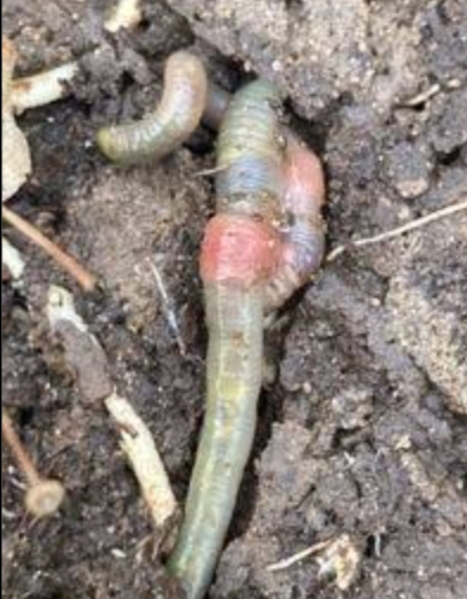Earthworms
Earthworms :
1. Lumbricus terrestris (Common Earthworm)
Description: This is the classic earthworm, often referred to as the "nightcrawler." It has a segmented body, typically reddish-brown to purple, and can grow up to 14 inches long.
Habitat: Found in gardens, forests, and agricultural fields.
Role: Known for its ability to aerate soil and create deep burrows, improving water infiltration and soil structure.
2. Eisenia fetida (Red Wiggler)
Description: This species is smaller, usually around 3-4 inches long, and is reddish in color. It's known for its active composting capabilities.
Habitat: Commonly found in decaying organic matter, manure piles, or compost heaps.
Role: Excellent for vermiculture (worm farming) and composting, as it breaks down organic waste into nutrient-rich humus.
3. Aporrectodea caliginosa (Grey Worm)
Description: A common earthworm found in temperate regions, it has a grayish body with lighter segments.
Habitat: Prefers moist, well-drained soils and is commonly found in agricultural lands.
Role: Important for soil health, as it helps in the decomposition of organic material and improves soil aeration.
4. Dendrobaena veneta :
Description: Another red worm, often used in vermiculture. It is a smaller species compared to Lumbricus terrestris but is highly productive.
Habitat: Found in compost heaps and manure.
Role: Used in commercial worm farming for both composting and fishing bait.
5. Lumbricus rubellus (Red Earthworm)
Description: Similar to Lumbricus terrestris but smaller, typically up to 4-5 inches long. It's reddish-brown with darker segments.
Habitat: Found in moist soils, often in leaf litter and decaying organic matter.
Role: A key player in breaking down organic matter in forests and gardens.
6. Octolasion cyaneum (Blue Earthworm)
Description: A large, bluish species of earthworm that can grow up to 8 inches long.
Habitat: Typically found in rich, moist soils with abundant organic material.
Role: Plays a vital role in soil aeration and nutrient recycling, often found in temperate regions.
7. Allolobophora chlorotica (Green Worm)
Description: A smaller earthworm species that is greenish in color, often mistaken for a type of caterpillar.
Habitat: Found in soils with abundant organic matter, including grasslands and gardens.
Role: Helps in nutrient recycling and aerating the soil.
8. Eisenia hortensis (European Nightcrawler)
Description: Larger than the common red wiggler, typically around 6-8 inches long. It has a pinkish-red color.
Habitat: Prefers moist, rich soil in gardens, compost piles, and manure.
Role: Used in vermiculture, as it breaks down organic material efficiently and produces rich compost.
9. Lumbricus pseudoglobosus (North American Earthworm)
Description: This species is characterized by a globular shape and small size.
Habitat: Typically found in forested areas of North America, particularly in organic-rich soils.
Role: Important for decomposition and soil mixing in forest ecosystems.
10. Diplocardia ohioensis (Ohio Earthworm)
Description: A species of large earthworm native to the United States, especially the Ohio region.
Habitat: Prefers deep, moist, and fertile soils in forests and wetlands.
Role: Helps in soil mixing and fertility, improving plant growth in its environment.











